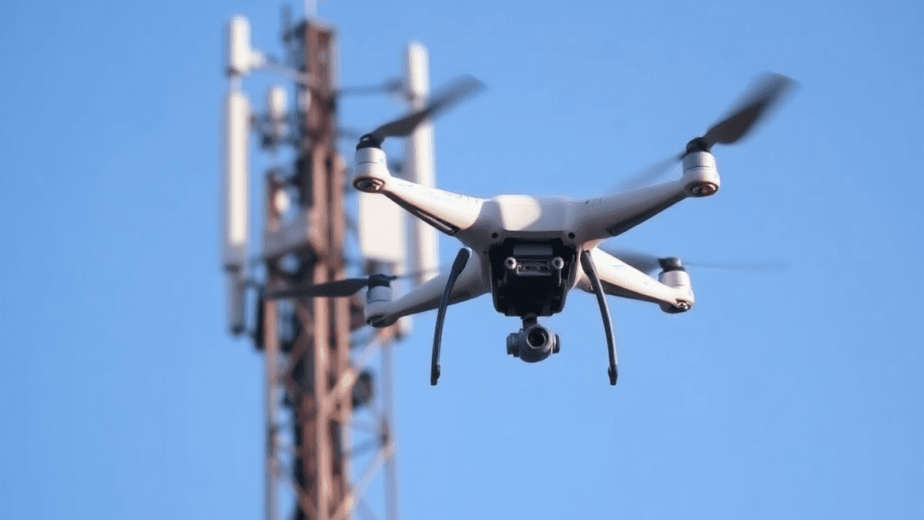Wildfires are becoming more frequent and pose a serious challenge. To combat this, we need to adopt advanced prevention methods. This is where AI comes in. It is changing the game when it comes to predicting, detecting, and managing wildfires.
AI offers new and creative solutions that can help us reduce the risks associated with wildfires. However, it’s important to remember that technology alone cannot solve this problem. We must also integrate traditional ecological knowledge with cutting-edge technology to create sustainable wildfire prevention strategies.
The impact of AI on wildfire prevention is significant. It highlights the urgent need for us to embrace technological advancements in order to protect our communities and natural landscapes.
The Growing Challenge of Wildfires
Climate change wildfires have surged in frequency and intensity, reshaping the landscape of wildfire risks globally. Rising temperatures, prolonged droughts, and shifting weather patterns create conditions that fuel larger and more destructive fires. Areas previously considered low risk now face unprecedented threats as fire seasons lengthen and dry vegetation becomes tinder for rapid ignition.
The impact of wildfires goes beyond just burning forests. It causes significant economic damage by destroying homes, disrupting energy infrastructure, and requiring expensive firefighting efforts. The environment suffers too, with loss of biodiversity, degraded soil, and increased carbon emissions that worsen climate change. And let’s not forget the human toll—health risks from breathing in smoke, communities being forced to leave their homes, and tragic loss of life.
Traditional methods used to prevent and monitor wildfires are struggling to keep up with these changing challenges. Manual patrols, lookout towers, and basic sensor networks only cover limited areas and often find out about fires only after they have started. Predicting fires is also difficult because it relies on past data without considering real-time environmental factors or advanced analysis techniques. These shortcomings highlight the urgent need for smarter solutions using technology to effectively manage wildfire risks.
AI-Driven Prediction and Early Warning Systems
AI wildfire prediction relies heavily on machine learning models that analyze diverse data sources to assess fire risks with remarkable accuracy. These models process historical weather patterns, vegetation density, topography, and human activity to forecast where wildfires are most likely to ignite. The integration of Geographic Information Systems (GIS) enhances this by mapping high-risk zones in real time.
Key features include:
- Multi-source data analysis: Combining satellite imagery, meteorological data, and ground sensor inputs enables a comprehensive risk assessment.
- Real-time alerts: AI algorithms generate immediate warnings for potential ignition points, allowing authorities to act before fires start.
- Complex phenomenon prediction: Advanced AI models can detect early signs of pyrocumulonimbus clouds—fire-generated thunderstorms that can exacerbate wildfire spread—improving preparedness measures.
These early warning systems provide critical lead time for emergency responders and communities, shifting wildfire management from reactive to proactive. Leveraging AI wildfire prediction and early fire warning AI tools transforms the capability to predict not only where fires might begin but also how they could develop under changing atmospheric conditions. This precision supports more targeted prevention efforts and strategic planning in vulnerable regions.
Real-Time Monitoring and Early Detection with AI
Satellites equipped with advanced imaging technologies play a crucial role in AI fire detection by capturing smoke plumes and heat signatures at the earliest stages. These space-based sensors provide broad coverage, enabling the monitoring of vast forested and remote areas where wildfires often begin unnoticed.
Ground-based IoT fire sensors complement satellite data by offering hyperlocal detection. These smart devices detect temperature fluctuations, smoke particles, and gas emissions with high sensitivity. When integrated with satellite observations, they fill gaps in coverage caused by cloud cover or satellite revisit times, ensuring continuous surveillance.
Key benefits of combining these technologies include:
- Comprehensive area coverage: Satellite imagery scans large regions periodically, while IoT sensors monitor specific high-risk zones continuously.
- Early ignition alerts: AI algorithms analyze data streams from both sources to identify potential fire outbreaks before flames spread uncontrollably.
- Faster response times: Hyperlocal detection from ground sensors allows firefighting teams to pinpoint exact locations quickly, improving containment success.
This integration exemplifies how AI is transforming wildfire prevention by enabling proactive intervention through timely, accurate information. Continuous real-time monitoring reduces the window between fire ignition and response, significantly lowering risks to ecosystems and communities alike.
Moreover, advancements in fire prediction technology are further enhancing our ability to prevent wildfires. By leveraging AI and machine learning algorithms, we can analyze historical data patterns to forecast potential fire outbreaks more accurately. This proactive approach not only aids in effective resource allocation for firefighting efforts but also plays a vital role in wildfire prevention strategies.
Risk Assessment and Optimized Resource Allocation
Effective wildfire management requires a deep understanding of the risks involved and the ability to allocate resources efficiently. Here’s how technology is making a difference:
1. Identifying Hazardous Areas with Machine Learning
Machine learning algorithms can analyze satellite images and climate patterns to identify areas at high risk of wildfires. By understanding these hazardous areas, firefighting agencies can allocate their resources more effectively and target their efforts where they are most needed.
2. Empowering Communities with GIS-Enabled Tools
Geographic Information System (GIS) technology allows for the creation of interactive maps that display various hazards, including wildfires. These maps can be used by communities to plan for emergencies and build resilience against potential disasters. With GIS-enabled tools, community leaders can make informed decisions about resource allocation and evacuation routes.
3. Optimizing Resource Deployment with AI Models
Artificial Intelligence (AI) models can analyze dynamic risk data, such as weather conditions and vegetation moisture levels, to optimize the deployment of firefighting resources. By considering these factors in real-time, firefighting agencies can strategically position their equipment and personnel to respond quickly to emerging threats.
These advancements in risk assessment and resource allocation are crucial in combating wildfires effectively. By leveraging technology, we can stay one step ahead of these disasters and protect our communities better.
Combining Indigenous Knowledge with AI for Fire Management
Indigenous fire management practices have long demonstrated the effectiveness of cultural burns—controlled, low-intensity fires used to reduce fuel loads and maintain ecosystem balance. Integrating these time-tested methods with AI insights creates a powerful synergy for wildfire prevention. AI can analyze environmental data at scale, identifying optimal conditions and locations for cultural burns based on terrain, vegetation, and weather patterns.
The Role of Community Partnerships
Community partnerships play a crucial role in this integration. By working directly with Indigenous groups and local experts, technology developers ensure that AI-driven strategies respect cultural values and traditional knowledge systems. This collaboration helps tailor fire management approaches to specific landscapes and community needs, enhancing effectiveness while honoring heritage.
Benefits of Combining Indigenous Practices with AI
Benefits of combining Indigenous ecological practices with AI include:
- Sustainable wildfire prevention through adaptive, context-specific interventions.
- Enhanced ecological resilience by maintaining biodiversity and soil health.
- Culturally respectful fire management that supports Indigenous sovereignty and knowledge transmission.
This holistic approach leverages both the precision of machine learning models and the deep environmental understanding embedded in Indigenous practices. The result is a more informed, inclusive strategy that addresses wildfire risks while supporting ecosystem integrity and community well-being. Such strategies have been shown to significantly improve fire management outcomes, making them an essential part of modern ecological practices.
Supporting Sustainable Forest Management through AI
AI-driven vegetation intelligence plays a critical role in modern wildfire prevention by enabling precise analysis of forest conditions. Using advanced algorithms, AI evaluates satellite images and sensor data to identify trees and underbrush that pose the highest fire risk. This allows for targeted trimming or removal of high-risk vegetation, effectively reducing fuel loads without unnecessary disruption to healthy ecosystems.
Balancing Wildfire Risk Reduction with Ecosystem Restoration
Balancing wildfire risk reduction with ecosystem restoration requires thoughtful application of fuel load reduction technology. AI models help forest managers determine where interventions will have the greatest impact while preserving biodiversity and supporting natural regeneration processes. The integration of these technologies respects ecosystem dynamics rather than applying one-size-fits-all solutions.
Long-Term Sustainability Benefits from Informed Decisions
Long-term sustainability benefits emerge from informed decisions guided by advanced analytics. Forest management strategies become more adaptive and data-driven, leading to healthier landscapes that are better equipped to withstand wildfires. Continuous monitoring with AI also supports ongoing assessment of restoration efforts, ensuring that progress toward ecosystem health is measurable and aligned with wildfire prevention goals.
This approach answers the question How AI is transforming wildfire prevention? by shifting focus from reactive firefighting to proactive landscape management. Vegetation intelligence AI transforms traditional practices into precision tools for sustainable forest stewardship and resilient communities.
The Role of Spatial Intelligence in Wildfire Prevention
Spatial intelligence applications for wildfires are crucial in safeguarding important infrastructure from wildfire threats. Tools such as satellite images, drone monitoring, and AI-powered analysis provide a complete picture of at-risk assets. This allows for accurate supervision of electric utilities, substations, transmission lines, and renewable energy facilities vulnerable to fires.
How Spatial Intelligence Helps in Wildfire Prevention
Here are some ways spatial intelligence contributes to wildfire prevention:
- Early Detection: By using various technologies like satellites and drones, we can spot potential fire hazards before they become serious threats.
- Predictive Maintenance: With the help of AI, we can predict when certain parts of our infrastructure might fail due to wildfires and fix them beforehand. For instance, AI is already enhancing inspections at hydropower and dam projects, allowing for timely maintenance that could prevent fire-related damages source.
- Resource Allocation: Spatial data helps us decide where to send our resources (like firefighters or equipment) most effectively during a wildfire event.
- Adaptive Strategies: By continuously analyzing data from past wildfires, we can improve our strategies for future incidents.
Importance of Continuous Evolution
It’s important to keep improving our systems to stay ahead of new challenges and complicated environmental factors. Advanced spatial intelligence platforms combine different sources of information—such as weather patterns and terrain features—to provide actionable insights that adapt to changing conditions. This flexible approach supports customized wildfire prevention strategies tailored to specific areas and infrastructure types.
Key benefits include:
- Early identification of high-risk zones around critical infrastructure
- Enhanced situational awareness supporting rapid decision-making
- Efficient allocation of maintenance resources through AI-driven prioritization
- Strengthened resilience of electric utilities and renewable energy assets under fire threat
Spatial intelligence is essential for developing smarter, data-driven wildfire prevention programs aimed at protecting vital services and minimizing disruptions caused by fires.
Future Outlook: Enhancing Wildfire Resilience with AI Innovations
Emerging future wildfire prevention technology is pushing the boundaries of what AI can achieve in resilience building. Advanced machine learning algorithms are evolving to handle increasingly complex data inputs, improving the accuracy of fire behavior models and enabling earlier detection of subtle environmental changes that signal heightened risk.
Key trends include:
- AI-driven multi-source data fusion: Combining satellite imagery, drone surveillance, weather forecasts, and ground sensors in real time to generate comprehensive risk profiles.
- Predictive analytics for dynamic resource management: Anticipating wildfire spread patterns to proactively deploy firefighting assets with greater efficiency.
- Autonomous aerial systems: Drones equipped with AI capable of rapid assessment and even initial suppression efforts in hard-to-reach areas.
Community engagement platforms stand to gain from AI-powered interactive visualizations and analytics that translate complex wildfire data into accessible formats. This empowers residents, local governments, and emergency responders to make informed decisions collaboratively. Expanding these tools fosters a more connected and resilient approach to wildfire preparedness at the grassroots level.
Innovations in AI resilience building continue shaping a future where wildfire impacts can be mitigated more effectively through technology-enabled foresight and collective action.
Conclusion
Integrating AI technology with traditional fire management strategies is crucial for enhancing safety and resilience in the face of escalating wildfire threats.
By combining advanced technologies with cultural practices, we can forge a sustainable path towards effective wildfire prevention and management amidst changing environmental conditions.
FAQs (Frequently Asked Questions)
How is AI transforming wildfire prevention and management?
AI plays a key role in transforming wildfire prediction, detection, and management by integrating innovative technology with traditional knowledge to enable sustainable wildfire prevention. It enhances early warning systems, real-time monitoring, risk assessment, and resource allocation to improve safety and resilience amid worsening wildfire conditions.
What impact does climate change have on wildfires and how does AI help address these challenges?
Climate change increases the frequency and intensity of wildfires, leading to significant economic, environmental, and human costs. Traditional prevention methods have limitations; AI-driven models analyze climate patterns and satellite data to predict fire risks accurately, enabling proactive measures to reduce wildfire impacts effectively.
How do AI-driven prediction and early warning systems improve wildfire risk reduction?
Machine learning models analyze diverse data sources to predict fire risks and provide real-time high-risk alerts for potential ignition points using AI and GIS integration. These systems can also predict complex fire phenomena such as pyrocumulonimbus clouds, enhancing preparedness and enabling faster response to emerging threats.
In what ways does AI enhance real-time monitoring and early detection of wildfires?
AI integrates satellite fire monitoring with ground-based IoT sensors to detect smoke and heat signatures early across comprehensive areas. Hyperlocal detection enabled by AI allows for faster response times to contain fires before they spread widely, significantly improving wildfire prevention efforts.
How does integrating traditional ecological knowledge with AI benefit wildfire management strategies?
Combining Indigenous ecological practices like cultural burns with AI insights creates holistic wildfire strategies that are both sustainable and culturally respectful. This integrated approach fosters community partnerships leveraging technology alongside local expertise for enhanced fire management outcomes.
What role does spatial intelligence play in optimizing wildfire prevention efforts through AI?
Spatial intelligence technologies monitor critical infrastructure vulnerable to wildfires by enabling real-time asset tracking and predictive maintenance. This enhances the resilience of electric utilities and renewable energy assets while delivering actionable intelligence that supports continuous evolution of prevention platforms.



